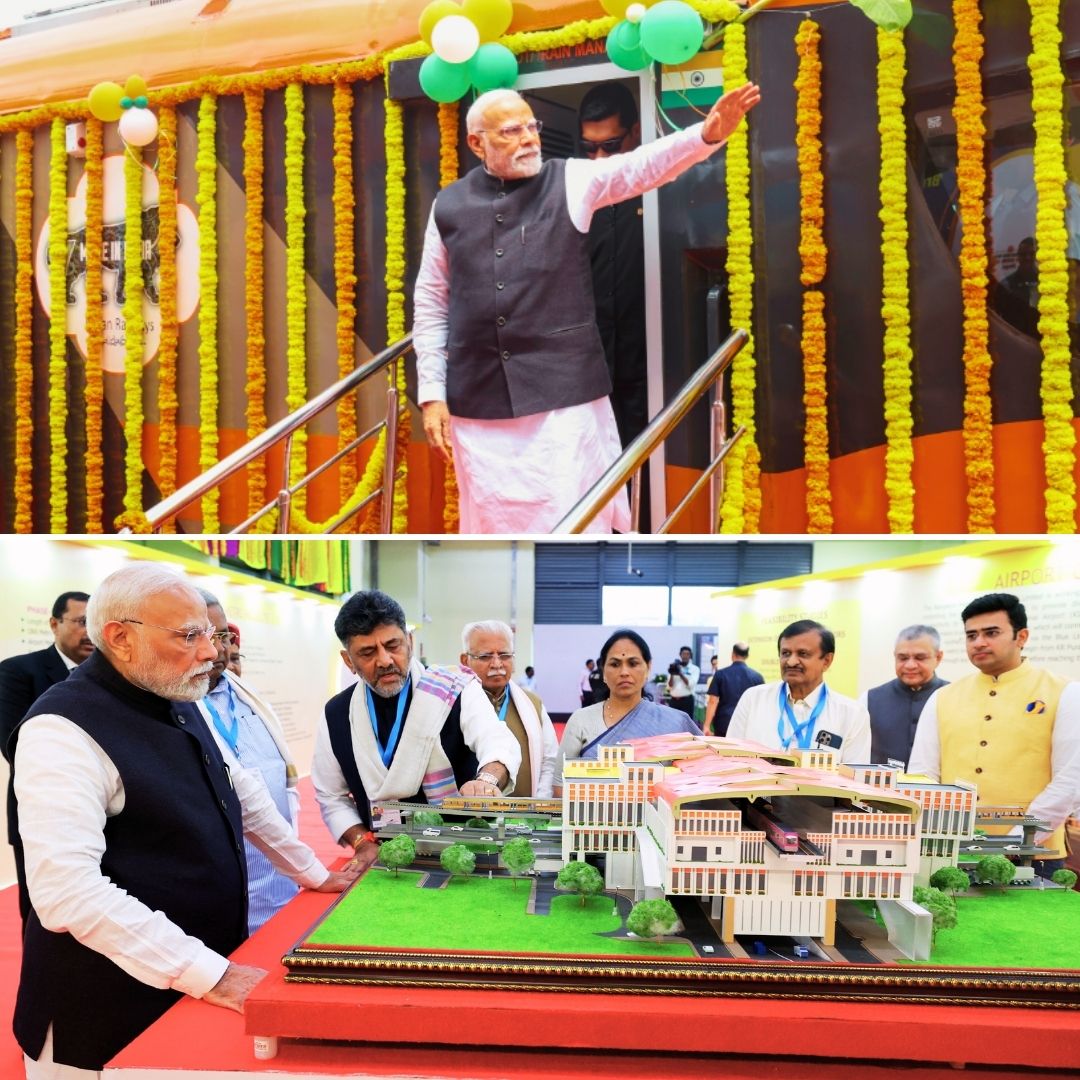Prime Minister Narendra Modi inaugurated the long-anticipated Yellow Line of Bengaluru’s Namma Metro on August 10, 2025, marking the completion of a significant Rs 7,610-crore infrastructure project that took eight years to build.
The 19.1-kilometre elevated corridor, featuring 16 stations, connects South Bengaluru to the Electronics City IT hub, significantly reducing travel times and easing congestion for thousands of daily commuters.
The inauguration was attended by Karnataka Chief Minister Siddaramaiah, Deputy Chief Minister DK Shivakumar, and Union Minister Manohar Lal Khattar. The Yellow Line officially opened to the public on August 11, operating initially with three trainsets at 25-minute intervals, with plans to increase frequency as ridership grows.
A Game-Changer for Bengaluru’s Transit
The new Yellow Line links key residential and commercial areas, providing seamless connectivity with existing Green, Pink, and Blue metro lines. Interchange stations such as RV Road (Green Line), Jayadeva Hospital (Pink Line), and Central Silk Board (Blue Line) allow commuters flexible, efficient cross-city travel.
The line serves major localities including BTM Layout, Bommanahalli, Electronic City, and Bommasandra, which are vital for the city’s sprawling IT and industrial sectors. Officials have highlighted the line’s potential to reduce the notorious traffic jams in Bengaluru by encouraging a shift from private vehicles to metro travel, thereby lowering pollution and easing road congestion.
The project includes modern elevated tracks, spacious stations, and integrated facilities designed to improve last-mile connectivity and commuter experience. Ridership is expected to dramatically increase, with daily users projected at up to 800,000 once operations stabilise and more trains are added.
An Eight-Year Endeavour of Cooperation and Innovation
The Yellow Line project, sanctioned in 2014 as part of Bengaluru Metro’s Phase-II expansion, was completed after overcoming numerous challenges, including funding and engineering complexities. The collaborative effort between the central and state governments, alongside innovative financing models with contributions from corporate partners for certain stations, played a crucial role in its success.
The line’s launch follows the opening of the RV Road interchange station, which is significant for providing a second major connectivity hub beyond the original interchange linking the Purple and Green lines. Beyond easing daily commutes, this addition is aligned with Karnataka’s vision for sustainable urban development and improved public transport infrastructure, supporting economic growth and better quality of life in the city.
The Logical Indian’s Perspective
The inauguration of the Yellow Line represents a vital progression towards sustainable urban transport, showcasing how coordinated governance and innovative funding can deliver large-scale public benefits. This expansion not only provides faster, more reliable, and environmentally friendly travel options but also fosters social inclusion by connecting diverse residential and economic zones.
However, the success of such projects depends on ongoing efforts to ensure affordability, accessibility, and integration with other transport modes. As Bengaluru and other Indian cities rapidly urbanise, inclusive infrastructure development must prioritise harmonious growth and equitable access.
ಭಾರತದ ಅಭಿವೃದ್ಧಿಗೆ ಬೆಂಗಳೂರಿನ ಕೊಡುಗೆಯನ್ನು ನಮ್ಮ ಸರ್ಕಾರವು ಬಹಳವಾಗಿ ಗೌರವಿಸುತ್ತದೆ ಮತ್ತು ಈ ಮಹಾನ್ ನಗರದ ಮೂಲಸೌಕರ್ಯವನ್ನು ಸುಧಾರಿಸಲು ಬದ್ಧವಾಗಿದೆ. ಇಂದು ಉದ್ಘಾಟನೆಯಾದ ಬೆಂಗಳೂರು ಮೆಟ್ರೋದ ಹಳದಿ ಮಾರ್ಗವು ಐಟಿ ವಲಯದಲ್ಲಿ ತೊಡಗಿರುವ ಜನರಿಗೆ ಪ್ರಯೋಜನವನ್ನು ನೀಡುತ್ತದೆ. ಇದು ಪ್ರಮುಖ ರಸ್ತೆಗಳಲ್ಲಿನ ದಟ್ಟಣೆಯನ್ನು ಕಡಿಮೆ… pic.twitter.com/bEdOpl2wuL
— Narendra Modi (@narendramodi) August 10, 2025












